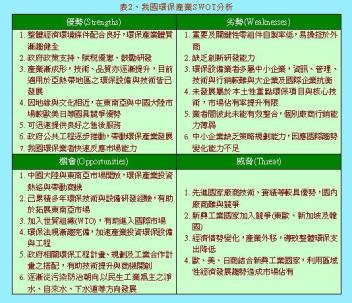
SWOT 分析經常被各種組織拿來用作分析所處環境的內部及外部挑戰。對外部挑戰,也就是OT機會與威脅,大家經常使用波特五力來分析。然而,對於內部挑戰,市場上則沒有大家公認的模型。
最近上了一堂組織行為課,內容提出了Barney教授的模型。這個模型認為,組織內有價值的,稀少的,不易被對手模仿的,與健全組織架構的能力與資源,都可以被視作組織內的S,強勢點。
這確實給了一個新的思考方向。只不過台長認為,就跟打show hand樸客牌一樣,重點應該是你的資源組合是同花順,還是只是葫蘆。最好的葫蘆永遠不可能打贏最濫的同花順的。
----
Executive Summary
Strength, Weakness, Opportunities, Threats, SWOT, analysis is a way to find competitive advantages for companies. In the external side, we use Porter’s “five forces model” to analyze the external environment and to find the high-opportunity with low-threat environment for a firm. But we don’t have other models to analyze internal competitive advantage, known as strength and weakness of a firm. Thus, the author offers a four aspects thinking model to find or to create unique resources and capabilities for a firm to have high-strength with low-weakness in the market.
The author proposed that a company with high strength is well organized to use its valuable, rare, and costly-to-imitate resources. “Valuable resources” means a firm can continually use to add value to the market, such as Sony and 3M have creative culture and high tech skills to create new popular products to the ever changing market, and AT&T has the most extensive long distance global network with Bell Labs’ strong R&D ability to position itself as the leader in telecom industry. “Rare resources” means competitors have no or limited of these resources, such as only Wal-Mart has point-of purchase system to perform just-in-time inventory control which makes them save more than others. “Cost-to imitate resources” come from history events, accumulated small improvements, and strong social complex resources. Besides, a “well organized firm” always has good formal reporting structure, management systems, and compensation polices. In the end, the author applied this analysis to two cases in soft drink and personal computer industries.
Key Take-Away
• To increase internal strength, we should find or create valuable, rare, and costly-to-imitate internal resources and capabilities.
• Organization which can rapidly adopt market changes will survive.
Critique
In today’s highly competing market, it is more important to form a set of internal resources which is stronger than competitors’. It is like to play the show-hand porker game. One’s best “two pairs” will always not be able to defeat the other’s worst “full-house”. Therefore, even some resources are valuable, rare, and hard-to-imitate, if they can not bring higher qualities or lower costs than a firm’s competitors’, they should not be considered as strengths in a company. For example, Sony is good at creating mini electronic products. However, the higher developing costs leading to the higher prices makes Sony cannot compete with those cheaper providers. Price is more important than creativity. More, AT&T is ambitious to be the leader in both telecommunication and computer industries. It turns out that AT&T cannot beat WorldCom’s cheaper price and IBM’s highly professional computing services. Professional is more influential than combined services. So, AT&T sold out NCR to focus on telecom in 1996, and allied with BT to form a new company in 1998. But still failed to focus the market and then spun off again in 2000.
One example in semi-conductor industry illustrates the importance of to build a company’s strength by comparing other’s strengths. Motorola used to have the most valuable and rare technology skills in producing semi-conductor. It also had a well organized factory system which could do everything from designing, processing, inspecting, cutting, and packing. However, it had been defeated by Taiwan’s companies in Hsing-chu Science Park. Each of these Taiwan companies only focuses on one part of the producing and competes with each other. So, a buyer can always find the cheapest or highest-quality providers by comparing. This competition creates cheaper total cost and higher quality. In these Taiwan companies, most have valuable resources in high quality people, rare in government support, and cost-to-imitate in introducing latest ERP systems. This set of resources win over Motorola’s in getting cheaper price and higher quality. Therefore, when a manager looks for internal strength, he should always find those which can bring cheaper costs or better qualities by comparing to competitors.
文章定位:




